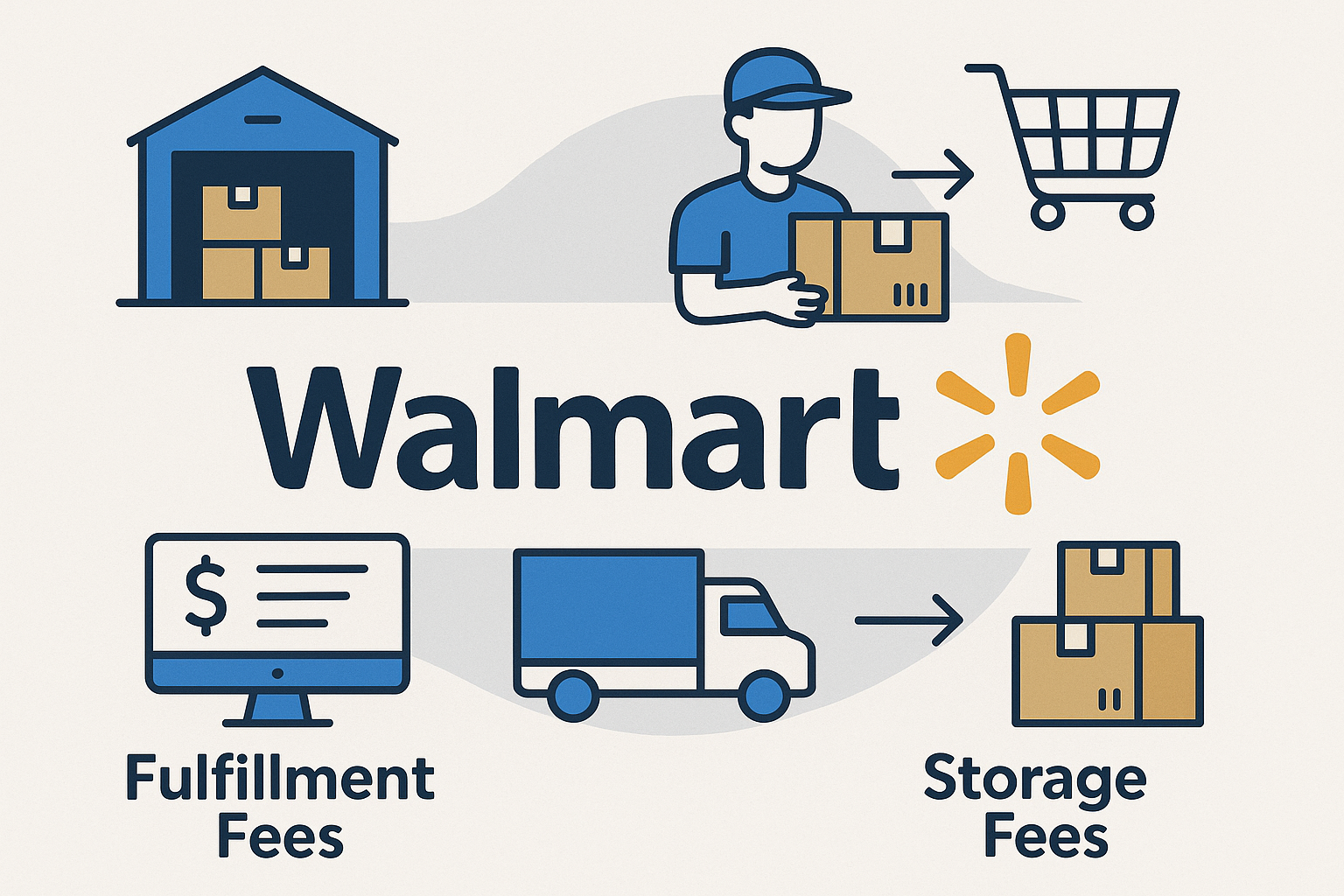- Perfality
- June 27, 2025
- 3:12 pm
- Read Time: 5 mintues
If you’re an e-commerce seller trying to expand beyond Amazon, chances are you’ve heard whispers about Walmart WFS. Maybe you’ve even peeked at the seller portal, toyed with the idea of applying, or started calculating shipping costs in your head.
Here’s the deal: Walmart Fulfillment Services (that’s what WFS stands for) has come a long way, and in 2025, it’s not just catching up to FBA—it’s competing with it, seriously.
Whether you’re brand new to WFS or just trying to figure out if the fees make sense, this guide will walk you through how it works, what it costs, and what to watch out for before you dive in.
What Is Walmart WFS?
At its core, Walmart WFS is pretty simple. It’s Walmart’s version of FBA.
You send your inventory to one of Walmart’s fulfillment centers. They handle the rest—storage, picking, packing, shipping, and even returns. Your listings get a boost in search results, buyers get fast delivery, and you don’t have to stress about managing a warehouse or printing shipping labels at midnight.
In our experience, it’s especially useful for brands already doing decent volume and looking for a second major channel outside of Amazon.
A Look Inside Walmart WFS Fees (No Sugarcoating)
Let’s get straight to it—WFS fulfillment fees aren’t free, and they’re not always simple.
There are two main buckets:
- Fulfillment fees (you’ll pay per unit shipped, based on size and weight)
- Storage fees (charged monthly depending on how much space your products take up)
Here’s what we’ve learned: while Walmart WFS fees are competitive, they can sneak up on you if you don’t build them into your pricing from the start.
If you’re offering free shipping on your own site or marketplaces like eBay, don’t forget to factor in Walmart fulfillment services fees when setting those margins. Otherwise, you’ll eat into your profit faster than you think.
The Truth About WFS Storage Fees
WFS storage fees are pretty straightforward—until they’re not.
You’ll pay monthly for whatever space your products take up in Walmart’s warehouse. Sounds fair. But there’s a catch: if your products sit too long, you’ll be hit with long-term storage surcharges. That means if you’re not moving inventory regularly, your costs can balloon fast.
One thing we always recommend? Keep an eye on your turnover rate. Don’t send 500 units if you’re only moving 10 a month. A bit of planning goes a long way in keeping Walmart fulfillment services fees under control.
Why Sellers Are Giving WFS a Real Shot in 2025
There was a time when sellers shrugged off Walmart fulfillment services—mainly because Amazon was already working for them. But that’s changed.
Now, WFS gives you some legit perks:
- Fast, 1–2 day shipping for most buyers
- Neutral packaging (so your brand stays front and center)
- Full access to Walmart’s customer service team
- Better visibility in Walmart’s search results and Buy Box
Honestly? A lot of sellers we talk to never realized how much traffic Walmart.com gets. With WFS, you get Prime-like delivery without being tied to Amazon. That alone makes it worth considering.
One of our clients saw a 38% lift in sales after switching just 3 SKUs over to WFS and offering faster delivery—no ad spend involved.
But Don’t Go In Blind: Things You Need to Know
We’re not here to sugarcoat it—WFS has its quirks.
First off, not every product is eligible. You’ll need to check if your category and size range qualify. Second, you’ve got to stay on top of inventory. Running out of stock doesn’t just kill your listing—it can push you out of the Buy Box altogether.
Also, while Walmart WFS fees and service are solid, it’s still your job to keep tabs on what’s being charged. Fees add up, especially during seasonal storage peaks or if something gets mislabeled.
So yeah, WFS fulfillment fees, WFS storage fees, and overall Walmart fulfillment services fees all play into your profit margins—make sure you’re building those into your pricing.
When to Call in Help (Before It’s Too Late)
WFS is easy to start with—but not always easy to manage at scale.
If you’re juggling listings on Walmart, Amazon, Shopify, and more… WFS is just one part of a very big machine. That’s where working with a seasoned Amazon FBA agency (like us at Perfality) can save you serious time and headaches.
We help sellers:
- Set up WFS without getting buried in setup errors
- Forecast inventory better (so you’re not paying for dead stock)
- Audit WFS fulfillment fees and track weird charges
- Improve listing performance and shipping experience
Walmart’s system isn’t perfect—but with the right support, it’s a powerful channel that’s often overlooked.
Final Thoughts: WFS Isn’t Just Another Fulfillment Option—It’s a Smart Strategy
Here’s the big takeaway: Walmart WFS can give you the reach and speed of FBA—without the same level of competition. If you’re already on Walmart.com, it’s worth exploring. If you’re not, you might be missing a fast-growing revenue stream.
Just remember:
- Know your numbers. Walmart WFS fees aren’t scary—but they must be planned for.
- Watch your WFS storage fees and ship only what you’re selling.
- Don’t expect everything to work perfectly right away.
- Use help when you need it—this stuff gets complicated quickly.
Thinking about scaling with Walmart WFS?
Perfality works with brands to set up, manage, and grow using Walmart fulfillment services—so you can sell more without working harder.






